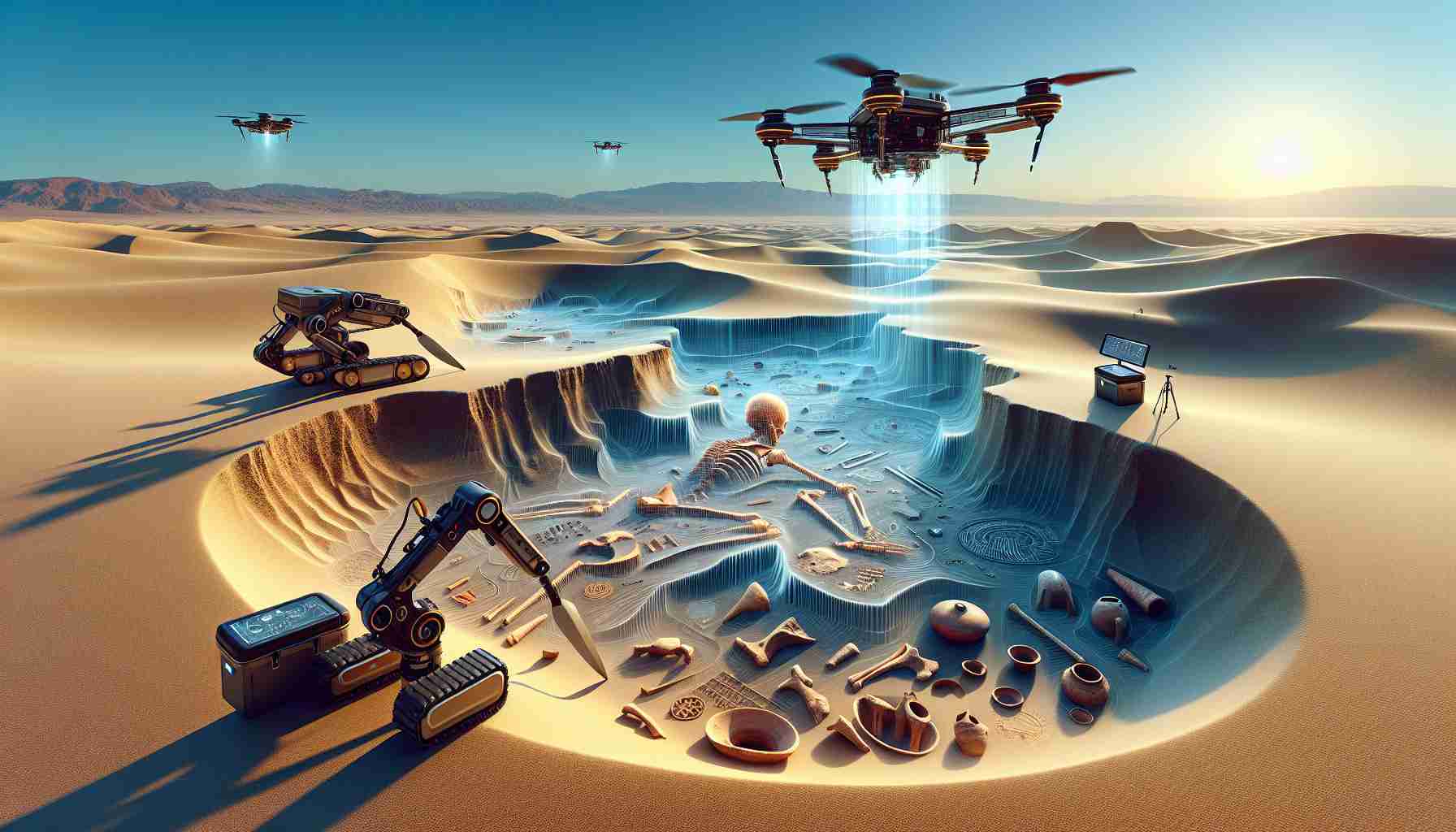Archaeologists are increasingly turning to innovative technology to explore some of the most inaccessible regions of the Earth. Recent advancements have seen the integration of artificial intelligence (AI) and satellite imagery to uncover hidden archaeological sites in the Arabian Desert.
Researchers from Khalifa University in Abu Dhabi have combined AI with satellite images and Synthetic Aperture Radar (SAR) to detect archaeological remains beneath the shifting sands of the Empty Quarter, a vast desert covering about 650,000 square kilometers. Traditional exploration methods often fall short in such large and arid areas, particularly due to sand and dust storms that obscure visibility and complicate site identification.
This team has devised a machine learning algorithm to analyze radar images, which utilize radio waves to locate buried objects, including vegetation and sand. The algorithm was initially trained with data from the 5,000-year-old settlement of Saruq Al-Hadid, which is recognized by archaeologists. Once trained, the algorithm identified additional, previously unexplored areas nearby as potential archaeological sites.
With an accuracy of 50 centimeters, this technology can create three-dimensional models of potential structures, providing researchers with enhanced insights into what lies beneath the surface. The collaboration between scientists and Dubai Culture has already led to ground surveys using ground-penetrating radar, verifying the findings from space.
As plans continue to excavate these newly identified sites, researchers anticipate that such technologies will unlock even more of the world’s archaeological treasures in the future.
Exploring the Future of Archaeology: Tips, Life Hacks, and Fascinating Facts
As advancements in technology reshape the landscape of archaeology, there are several interesting insights and tips to consider for anyone intrigued by this field. From utilizing AI for site discovery to understanding the challenges faced in remote locations, here’s a closer look at some valuable information related to modern archaeological practices.
1. Embrace Technology for Historical Exploration
For those interested in archaeology, learning how to use technologies like 3D modeling software can be beneficial. Familiarizing yourself with tools such as Geographic Information Systems (GIS) and drone mapping not only enhances your research but also allows for more thorough site analysis from various angles.
2. Understand the Importance of Environmental Factors
Archaeologists must often combat environmental challenges, such as sandstorms in desert regions. Understanding these factors can help in planning fieldwork. For example, scheduling explorations during periods of lower weather disturbances can lead to more productive excavations.
3. Leverage Online Resources for Continuous Learning
Stay updated on current archaeological discoveries by following reputable platforms and organizations. Some great resources include Archaeology Magazine and The Archaeological Institute of America. These sites offer articles, research papers, and news about ongoing projects that can deepen your knowledge.
4. Learn from Case Studies
Examining specific cases such as the Khalifa University project in the Arabian Desert reveals how incorporating AI and satellite imagery can transform archaeological practices. Understanding the methodologies used in these successful studies can inspire new approaches for your research or hobbies in archaeology.
5. Join Online Communities
Participating in forums and social media groups dedicated to archaeology can enhance your understanding and offer networking opportunities. Websites like Facebook’s Archaeology Group allow enthusiasts to discuss findings, share tools, and collaborate on projects.
6. Practice Sustainable Approaches
As archaeology often intersects with environmental science, adopting sustainable practices is essential. Techniques such as minimal disturbance excavation and responsible artifact conservation can help preserve sites for future generations.
7. Explore Volunteering Opportunities
If you’re seeking hands-on experience, consider volunteering with archaeological digs or institutions through platforms like The Archaeological Institute of America. This can provide practical experience and insight into the field while contributing to ongoing projects.
Interesting Fact: Did you know that the combination of AI and radar technology is not just limited to archaeology? Similar techniques are being applied in wildlife conservation efforts to monitor animal populations and habitats, showcasing the broader impact of technological advancements.
In conclusion, whether you’re a budding archaeologist or simply intrigued by the mysteries of the past, leveraging technology, understanding environmental factors, and engaging with communities can elevate your exploration of history. The future of archaeology is vibrant, and it offers countless opportunities for discovery and learning.








